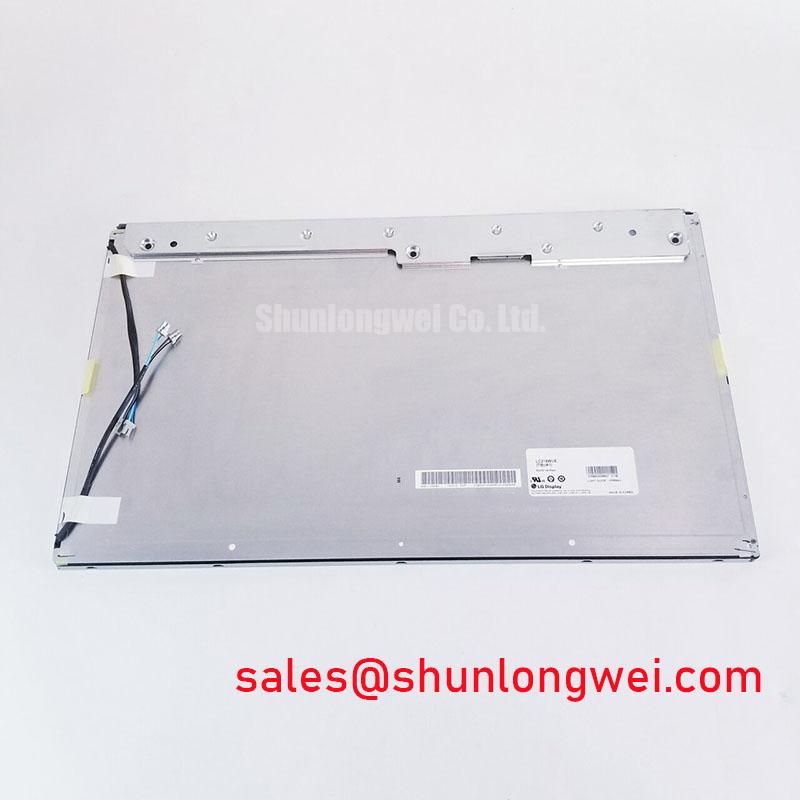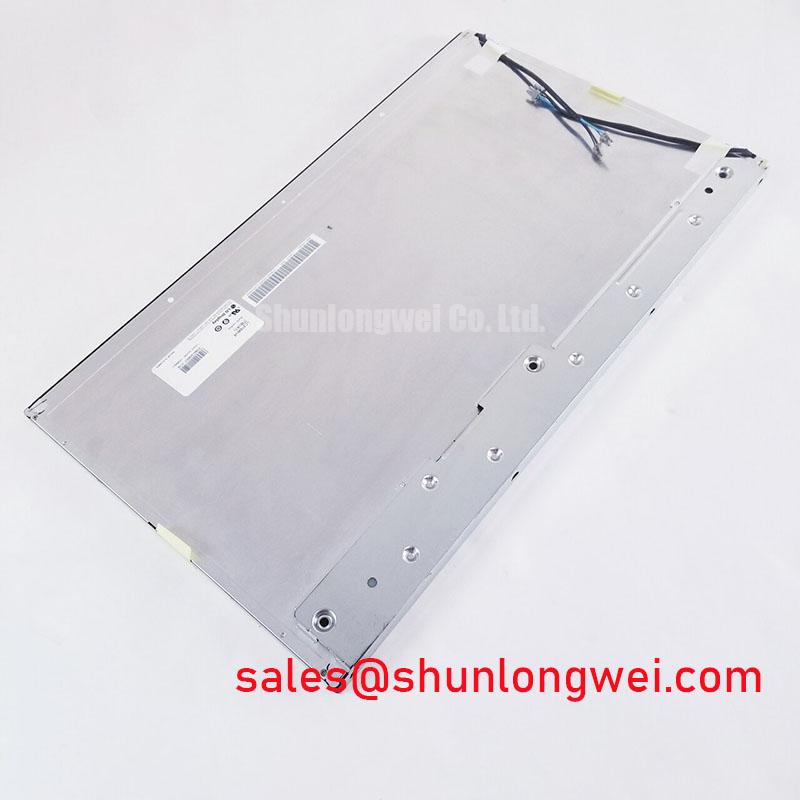LC215WUE-TBB1: 21.5-inch FHD LCD for Resilient Systems
Engineered for Visual Consistency and Durability
The LG Display LC215WUE-TBB1 is a 21.5-inch FHD panel structured to deliver stable visual fidelity and robust mechanical performance for integrated commercial systems. With core specifications of 1920x1080 FHD resolution, 250 cd/m² brightness, and a 2-channel LVDS interface, it provides a solid foundation for demanding applications. Key engineering benefits include superior user readability in varied lighting and a resilient surface design. Its 3H hard-coated, anti-glare surface treatment directly addresses the need for operational clarity and durability by minimizing distracting reflections and resisting surface abrasions in high-traffic indoor environments.
Core Visual Engine: a-Si TFT and LVDS Interface Integrity
The visual performance of the LC215WUE-TBB1 is founded on its amorphous silicon (a-Si) thin-film transistor technology. This mature and reliable backplane technology is instrumental in driving each of the 2,073,600 pixels (1920 x 1080) with stability, ensuring uniform brightness and color across the entire active area. What is the primary benefit of this technology? It enables the production of large, high-resolution panels with consistent quality, providing a dependable canvas for detailed graphical user interfaces and high-definition video content.
Data communication to the panel is managed via a dual-channel Low-Voltage Differential Signaling (LVDS Interface). This interface is a standard in industrial and commercial display systems for its high noise immunity and ability to transmit high-speed data over short distances with low power consumption. The 30-pin connector configuration provides a direct and secure link to the system's timing controller, simplifying the electrical integration process for system designers.
Technical Inquiries for System Integration
- What are the typical viewing angles for the LC215WUE-TBB1?Based on its datasheet, the panel typically offers viewing angles of 89/89/89/89 degrees (Left/Right/Up/Down) with a contrast ratio greater than 10. This ensures that visual information remains clear and color-consistent even when viewed from significant off-axis positions, a critical factor for public information displays and collaborative workstations.
- What are the power requirements for the WLED backlight system?The integrated WLED driver requires a specific input voltage and current, detailed in the official specification sheet. Engineers must ensure their power supply unit (PSU) can deliver this rated power consistently to maintain the panel's specified 250 cd/m² brightness and ensure the backlight's operational longevity.
- How does the anti-glare (AG) surface treatment impact perceived color saturation?The AG coating diffuses ambient light to prevent sharp reflections. While this dramatically improves readability, the microscopic texture can slightly soften the image and marginally reduce the perceived color vibrancy compared to a glossy panel. However, for its intended applications in informational and industrial settings, legibility is prioritized over the deep saturation typically sought in consumer media displays.
- Is the Timing Controller (T-Con) board integrated into the panel assembly?Yes, the LC215WUE-TBB1 module includes an integrated T-Con board. This simplifies system design as it eliminates the need for an external controller to convert LVDS signals into the column and row driver data required by the LCD matrix.
Deployment Snapshot: Reliability in Public-Facing Kiosks
Consider the deployment of the LC215WUE-TBB1 in interactive informational kiosks within a transportation hub or museum. In these environments, displays are subject to constant use and variable ambient lighting. The panel's anti-glare surface is crucial for maintaining legibility under bright overhead lights, while its 3H surface hardness provides a necessary degree of protection against incidental contact and frequent cleaning. The wide viewing angles ensure that information is accessible to multiple users simultaneously, supporting the operational goals of the public-facing system.
LC215WUE-TBB1 Core Performance Metrics
The following parameters are central to the integration and performance of the LC215WUE-TBB1. For a complete list of specifications, please refer to the official product datasheet.
| Parameter | Specification |
|---|---|
| Screen Diagonal | 21.5 inches |
| Resolution | 1920(RGB) x 1080 [FHD] |
| Panel Technology | a-Si TFT-LCD, Normally Black, Transmissive |
| Surface Treatment | Anti-Glare, Hard coating (3H) |
| Brightness | 250 cd/m² (Typical) |
| Contrast Ratio | 1000:1 (Typical) |
| Interface Type | LVDS (2 ch, 8-bit), 30 pins |
| Operating Temperature | 0 ~ 50 °C |
Interpreting Key Specifications
- Contrast Ratio (1000:1): This metric defines the luminance difference between the brightest white and the darkest black the screen can produce. A higher contrast ratio, like the 1000:1 typical for the LC215WUE-TBB1, is analogous to the clarity of a traffic signal; it makes distinct elements in an image, particularly text and lines, stand out sharply, which is vital for user interfaces and data visualization.
- Surface Hardness (3H): This value refers to the panel's resistance to scratching, based on the pencil hardness test. A 3H rating provides a tangible measure of durability, ensuring the display can withstand routine cleaning and interaction in commercial settings without rapid degradation of the viewing surface.
The Strategic Value of Durable Display Components
In the design of long-lifecycle systems such as industrial control panels or digital signage networks, component selection extends beyond initial performance. The emphasis on durability, as seen in the LC215WUE-TBB1's surface treatment and construction, directly impacts the total cost of ownership (TCO). By selecting a panel engineered for resilience in its target environment, system integrators can reduce the frequency of field service calls, minimize downtime, and enhance the end-user's perception of quality and reliability. This aligns with the broader industry trend of building more sustainable and robust digital infrastructure. Further reading on this topic can be found in our analysis of industrial versus consumer displays.
Primary Integration Scenarios
The feature set of the LC215WUE-TBB1 makes it a well-suited component for a range of indoor applications where clarity and reliability are primary design drivers.
- Industrial Human-Machine Interfaces (HMIs): In factory control rooms and automation panels operating within the specified temperature range.
- Digital Signage: For retail, corporate, and informational displays where off-axis readability is important.
- Medical Diagnostic Displays: As a viewing screen for non-diagnostic information display on medical carts and equipment.
- Custom Kiosks and ATMs: Where a durable user interface is essential for reliable, long-term public operation.
For indoor kiosk systems where upfront component durability is critical to minimizing long-term maintenance, the LC215WUE-TBB1's 3H hard coat makes it a leading design choice.
Comparative Data for Informed Component Selection
To support the engineering evaluation process, the following table compares key specifications of the LC215WUE-TBB1 with another 21.5-inch FHD panel. This data is intended to provide a factual basis for selection based on specific design priorities, such as brightness or interface requirements. For applications demanding different specifications, the LM215WF3-SLA1 is another available option.
| Specification | LC215WUE-TBB1 | LM215WF3-SLA1 |
|---|---|---|
| Resolution | 1920x1080 | 1920x1080 |
| Brightness (Typ.) | 250 cd/m² | 250 cd/m² |
| Viewing Angle | 89/89/89/89 | 89/89/89/89 |
| Surface | Anti-Glare, 3H | Anti-Glare, 3H |
| Interface | LVDS (2 ch, 8-bit) | LVDS (2 ch, 8-bit) |
Future-Proofing Integrated Systems
Selecting foundational components like the LG Display LC215WUE-TBB1 is a strategic decision that influences the long-term viability and performance of an integrated system. As user interfaces become more prevalent across all industries, the underlying display technology must provide a stable and resilient platform for innovation. By focusing on core principles of visual quality, reliable connectivity, and physical durability, this panel provides the engineering confidence needed to build the next generation of interactive digital solutions. Exploring resources like The Ultimate Guide to TFT-LCD can provide deeper context for these design choices.






